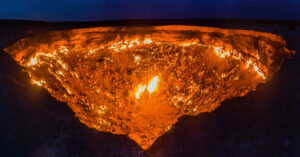Today, a modest stone memorial withstands the vicious winds of the Lop Desert in northwestern China. The complex red strokes of Chinese script spell a name: Peng Jiamu. It is an insignificant landmark in the midst of a vast sea of sand in one of the furthest corners of the world. Yet the disappearance of this ordinary but brilliant man with a simple dream of exploring his country continues to haunt adventurers and scientists alike.
Peng Jiamu was born in 1925 in Guangdong province. His fascination with nature led him to study biology at the Central University of China. He became a respected biochemist at the Shanghai Institute of Biochemistry and Cell Biology. His personal obsession was to reconcile laboratory research with the secrets of the natural world.
He also yearned to probe the wild edges of his country. Eventually, he earned a chance to explore remote Xinjiang province, its landscape, its endemic species and the potassium levels in its dust bowls. In 1956, he and a team of biologists, chemists and archaeologists launched the first of many expeditions to Xinjiang. Their work persisted for years.
In 1979, a year before his disappearance, Peng was elevated to vice-president of the Chinese Academy of Sciences. While remaining focused on science, Peng also relished the thrill of traveling by both modern and old-fashioned means: on foot, by donkey, by canoe and by car. “Science,” the ever-optimistic Peng said, “is to walk a road not traveled by other people.”

The area known as No Man’s Land in the Lop Desert. Photo: Huanqiu
The Lop Desert sits in the Tarim Basin, in the Uigur Autonomous Region of Xinjiang. It was once a crossroads on the old Silk Road. A vast salt lake called Lop Nur then covered a region 120km long and 160km wide and nourished the ancient Loulan kingdom. Many fish species lived in the lake, and the surrounding oasis sustained nearby villages, despite extreme temperatures of up to 50˚C.
However, Lop Nur was also called the Wandering Lake because of a strange phenomenon that caused it to shift its location intermittently. As it traveled further, those ancient communities that depended on it withered away. Today, the desert is an archaeological jackpot, with well-preserved tombs, a cemetery dating back to the Bronze Age, buildings, Buddhist monasteries and mummified remains. These are the only remnants of that region’s former glory.
It is not surprising that Peng’s 1980 expedition to the Lop Desert encountered early challenges. They went during one of the harshest times of year. The team’s cars often plunged into soft riverbeds or moving dunes. They had limited food, water and fuel to support their arduous travels by foot and vehicle. Just five days into the expedition, Peng ventured into the emptiness of Lop Nur alone in search of water. He never returned.
Peng Jiamu’s disappearance shook the nation, and the Chinese government launched an expansive rescue effort, with help from the military and police. Over the years, several mummified remains and skeletons have been dug up and subjected to DNA analysis. Although one of the mummies turned up near where the scientist went missing, there has been no DNA match.

The ancient sands of the Lop Desert conceal archaeological treasures — and bodies. Photo: World Atlas
Since he was a seasoned explorer, familiar with the dangers of this desert, people were convinced that his death was not an accident. Yet even Marco Polo described in his writings how easy it was to get lost in the desert.
Peng’s disappearance prompted wild conspiracy theories. The Lop Desert was the site of nuclear weapons testing from 1959 to 1996. It was also a restricted military zone, and people were not allowed to roam freely. Peng seemingly disobeyed orders by setting off on his own. Perhaps he stumbled on something he should not have seen.
Some believe that Peng might have defected or that the Americans or Soviets kidnapped him. The son of a top Chinese Communist Party official made a wild claim that he had spotted Peng at a restaurant in Washington, D.C. The idea of alien encounters even made their way into the conversation.
During the investigation, a colleague suggested that Peng was terminally ill with cancer but had insisted on pursuing his research, despite physical weakness. In 1957, he was, in fact, diagnosed with a tumor but he had recovered. Had the disease returned? Peng left camp that day with just his two cameras and a water bottle. Was it a suicide mission? Was he killed by his colleagues? Who really knew?
More reasonable, it is possible that he fell while scouring the hills, which were very unstable with loose soil and rocks. His remains are probably buried in the drifting sands of the Lop, too deep to retrieve.

Lop Nur taken from space. Photo: NASA
The Lop Desert has racked up a considerable body count in modern times, from radiation poisoning and as conditions worsened from climate change. In 1996, Chinese explorer Yu Chunshun died of dehydration when trying to cross Lop Nur. An additional six skeletons turned up between 2005 and 2007. The desert has rightly earned the nickname, Asia’s Devil’s Triangle.
The Chinese government continues to regard Peng as a “revolutionary martyr” for science and exploration. His story has been dramatized in the TV series, Searching for Peng Jiamu. In his country, he has become a symbol for scientific progress and for exploring the unknown.
Yet an air of ambiguity and mystery still surrounds his fate. Perhaps one day, his remains will turn up and he will be buried in a manner befitting that of a national hero. Even then, however, it is unlikely that all the conspiracy theories will be buried with him.






